Table of Contents
How many times have you hit the trail or road and realized that you forgot to attach the right lights to your bicycle? And how do you pick the right bicycle light since you’ll find hundreds of them for sale with price points between $2 and $1,200. As a year-round bicycle commuter for almost a decade, I can testify to the importance of ensuring your bicycle is as visible as possible. And unlike some bicycle accessories that merely influence the comfort of your ride, having the appropriate bicycle lights can mean the difference between life and death. A few quick facts to get your attention:
- Two people die every day in the US because of bicycle/car accidents.
- Alcohol was involved in 35 percent of all fatal bicyclist crashes in 2016
- Do you think you’re most likely to die as a pedestrian, motorcyclist, in an airplane or on a bicycle? Read on and I’ll answer this for you.
Making yourself more visible to drivers so that you don’t become a part of the statistic is important. This is even more relevant for all-season commuters—like those of us in the Northeast–who battle short winter days, heavy rain and the accompanying hazards that are amplified by dark, wet roads that lack shoulder width or bicycle paths.
Some Sobering Statistics
Think about it…since most bicycle accidents occur between 6pm and 9pm because of a visibility or alcohol-related issue, don’t cut corners on illuminating yourself when biking at night. And, assume the worst of drivers by cycling defensively.
When shopping for a bike light or bike light kit, consider the following:
Time of Day or Night

Make sure your tail light is bright enough to be seen during day time bicycling if you’re a commuter in an urban area.
A basic front and rear blinker should work well if you’re travel time is short. The main goal is to make sure your front headlight is powerful enough to be seen by opposing traffic when biking at night. The brighter the ambient light (think day time), the brighter the system you’ll need for visibility. For example, rear blinkers that generate 10-15 lumens may seem bright after dark but will be more difficult to see on a bright day. Our top choice, the Bontrager Ion Pro addresses this issue head on.
Batteries and Cost
Rechargeable lithium batteries are typically the most common way bike batteries are powered. Although there are benefits to lithium batteries, we often use bike lights powered by conventional batteries. When you find models that use conventional batteries, don’t overlook the benefit of these types of lights even though they typically don’t throw off as much light. Having said that, lights that use conventional batteries are heavier than those than use rechargeable lithium batteries. I still use lights with conventional batteries since the quality of the light and the length of charge pack a powerful punch–even though you’ll burn through batteries pretty quickly.
Mounting Your Lights
Lights can be mounted just about anywhere you feel your bike would benefit from more visibility. We’ve mounted ours to handlebars, the bicycle frame, the seat post, our helmet and to our wheel spokes. Helmet mounts are especially helpful for night mountain bike rides, but we’ve always valued our helmet light during our nighttime bike commutes. This is even more the case when coupled with a strong bike headlight that has a complimentary beam pattern.
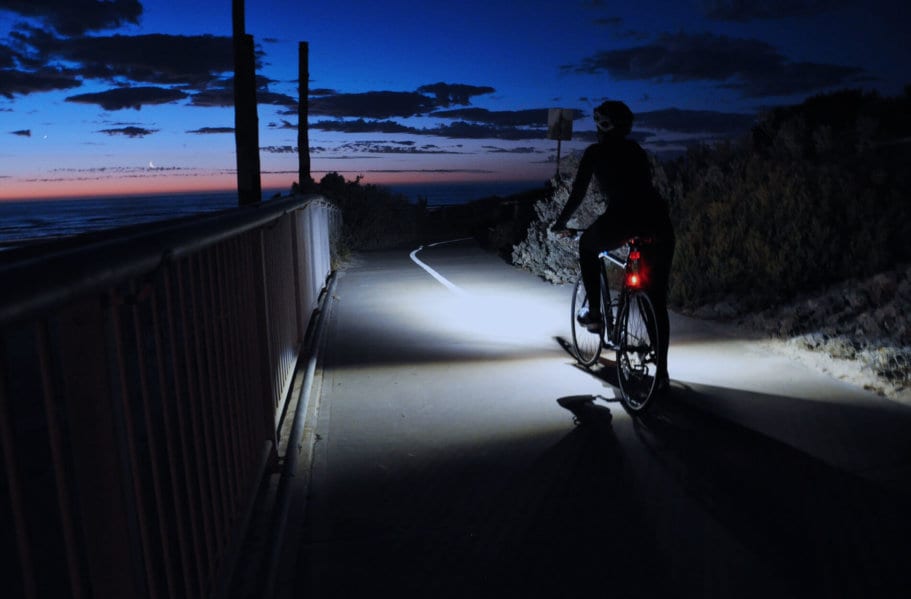
Brightness
Lights are rated in lumens, which measures the devices light output. We talk in great detail about lumens at the end of this article. Even though most of our list below is focused on mid-range options under $50, there is a class of bicycle high lumens lights that we’ll cover in an upcoming post. Many of these options are 6000 lumens or more and cost between $600-$1,000. Below is an example of one such light–the Cat Eye Volt 6000 (see below) or the Diablo Sync light. 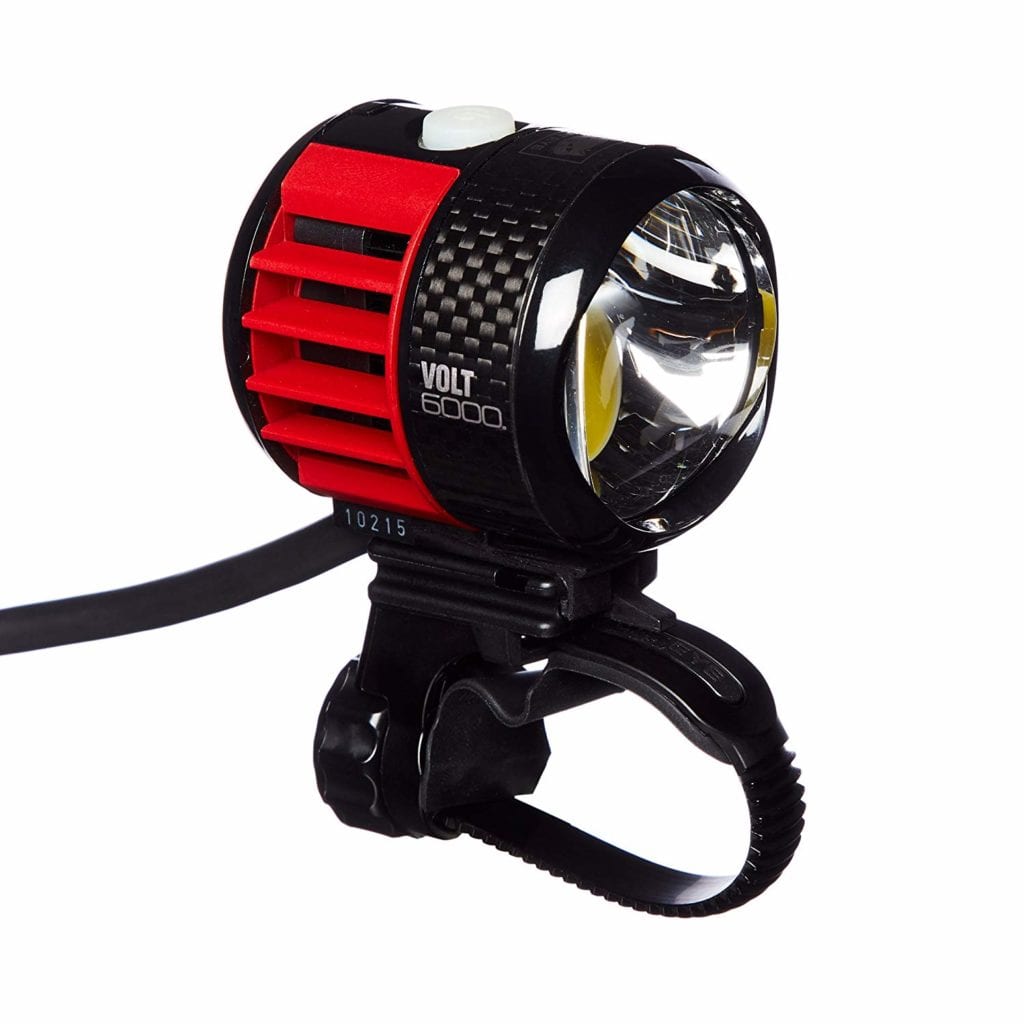
Buying Essentials
There are many different types of bicycle lights: headlights, front and back light sets, rear blinkers, and miscellaneous lights. And as mentioned above, there is a different bike light for every price point. Spend more and you can clamp a 6000 lumens light to your helmet or frame. Go cheap, and you’ll be down in the Light ropes or reflective clothing have also become more popular over the last several years. One of the more significant advances this year is the focus on lights that help increase your visibility during the daytime. Our overall bike light top pick embraces this technology and sets the bar high for the future of bike light design. When purchasing your new lights, don’t forget to look for one than can be easily removed from wherever you mount it. Also, since many of us bike in the rain, check the IPX rating to make sure it will do well in wet conditions.
All of our recommendations below have IPX ratings of 5 or 6. As you peruse our list below, we added recent video footage of our top three recommendations so you can get up close and personal with each model.
1. Bontrager Ion Pro RT/Flare RT Light Set
Buy on Trekbikes.com
Lumens: Headlight = 1300; Flare RT = 90 lumens
Key features: Extremely bright (1300 lumens), 12 hours of working time, IPX7 (waterproof), ANT+ and Bluetooth allows you to seamlessly connect to Garmin and Bontrager Transmitr devices.
Consider for a moment that 8 out of 10 bicycle accidents occur during the daytime. However, with the right illuminated devices or reflectors you can almost triple your visibility and lower the odds of being in a daytime accident. Got your attention? Even though you’ll pay more for the Bontrager Ion Pro, there’s a lot to like if your willing to pay a bit more for safety. Although they could have chosen to make yet another $40 headlight with mediocre features, Trek went back to the drawing board and re-engineered this device so that it can be dual purposed as a running day light as well as a night light.
How did they do it? The Bontrager Ion Pro headlight is USB-rechargeable and has five modes for day and night and enough power to illuminate the full width of any trail. During the day, motorists, pedestrians and other cyclists will see you coming from a distance of almost 2 miles. The Ion Pro attaches with little effort to your handlebars or helmet and once attached, will withstand heavy vibration and extreme weather conditions. To help you more carefully manage your charge, the Ion Pro uses a “double-click on” switch that all but eliminates situations where you accidentally turn it on. And when you do reach the end of your charge, the unit kicks into a battery save move to extend the last 5% of your charge to help you get to where you’re going.
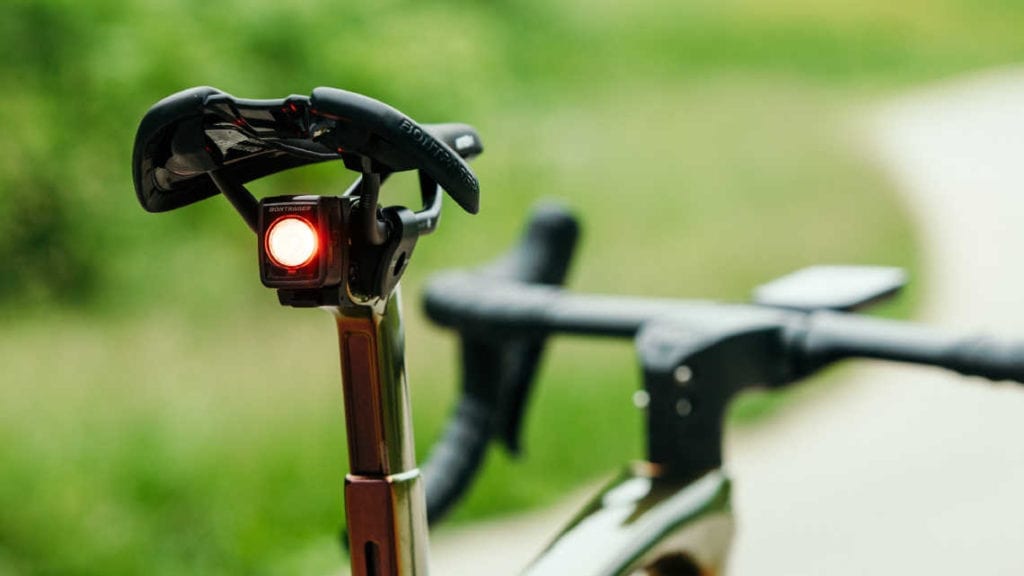
Bontrager Flare RT
If you own a Flare R, the new Flare RT is almost 40% smaller than its predecessor, 30% more powerful, and has 20% more battery life. The Flare RT also has a new USB charging port, a built-in sensor to adjust the lumens based on the ambient light conditions and a lock mode to keep it in the preferred setting. And for those in wet environments, the Flare RT repels wind and rain like a champ with its IPX7 rating.
2. Brightroad Original LED Bicycle Rechargeable Light Set
Buy on Amazon
Lumens: 800
Key features: Extremely bright (800 lumens), 18 hours of working time, IPX6 (waterproof), aluminum body
The Brightroad light kit is one of the best options currently on the market. At 800 lumens, the Brightroad provides vision up to 650 feet; even while moving at high speeds. Currently, this is also the top-rated bicycle light on Amazon with almost 150 mostly five-star reviews. Whereas most other bicycle lights are IPX5, the Brightroad is IPX6, which makes it highly water resistant. In terms of charging, you charge the Brightroad (the headlight and the rear blinker) using a USB cord. The manufacturer describes the headlight as covering 85 degrees with five modes. The blinker has 3 modes and is also made of aluminum. Keep in mind that although Amazon’s website states the Brightroad will last up to 18 hours, they typically only last 2-3 hours when used nonstop in high mode. If you’re committed to a battery-powered bike headlight, you should consider the TeamObsidian (see review below).
3. Cycle Torch Shark 500 USB Rechargeable Bike Light Set
Buy at Amazon
Lumens: 500
Key features: 4 modes, USB powered
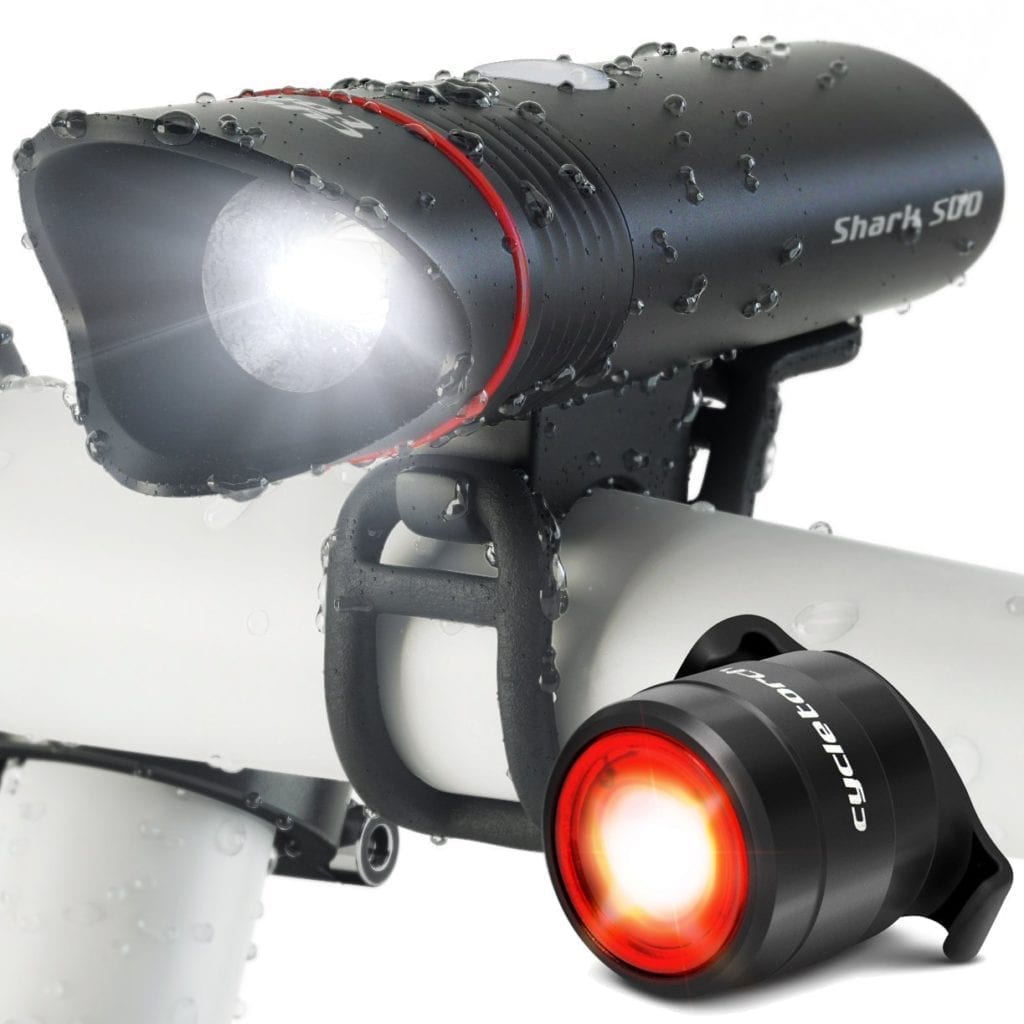
This is one of Amazon’s top bicycle lights and is charged via USB. This light comes with an automatic over charge and discharge cut-off system. You’ll also get 2 USB cables so you can charge both simultaneously. Users report that while there are lights with higher lumens, the pattern of this light creates a more helpful field of vision that is both long and wide. The straps for each light are also easy to use compared to some other lights that don’t form fit handlebars. On a full charge, USB lights will typically last 2-4 hours depending on the mode used.
4. Blitzu Gator 320 USB Rechargeable Bike Light Set
Purchase at Amazon
Lumens: 320
Key features: Free tail light, swivels 360 degrees, 4 modes, water resistant, detachable
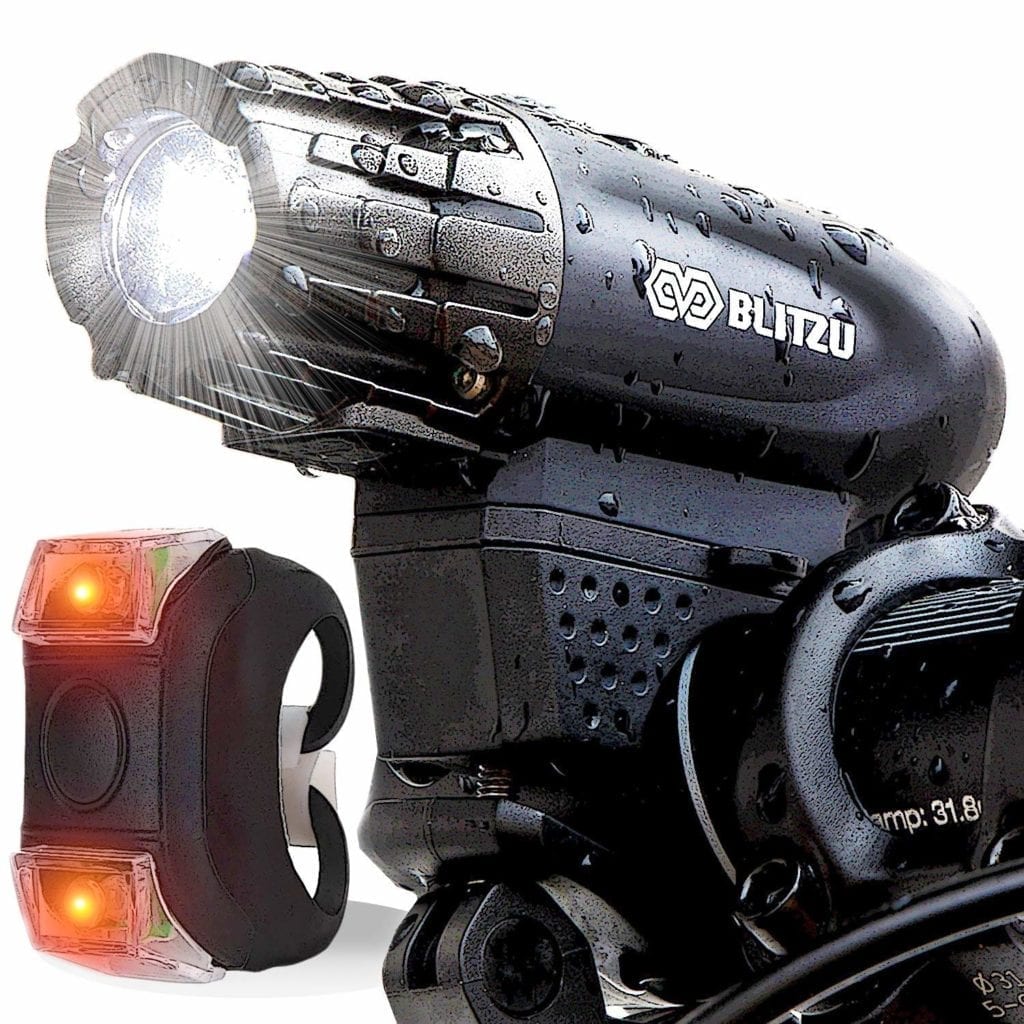
The Blitzu Gator 320 USB Rechargeable Bike Light Set is one of our top choices because of its $16.99 price, durability and brightness. This is Amazon’s top-selling bicycle light and comes with both a front headlight and a rear blinker. The Blitzu Gator 320 is built with sturdy molded plastic and has 4 modes: high, medium, low and flashing. This headlight charges with a USB and takes about 2 hours to fully charge. Once charged, it has a lifespan of about 2 hours when on its highest setting. Be aware that the rear blinker is not charged using USB and instead uses cr2032 batteries. If you’re looking for a USB-charged front and rear light, check out the Blitzu Gator 390. It will cost you a few dollars more, but it’s well worth the investment if you’d like to have a chargeable rear blinker and 70 more lumens (for 390 total lumens).
5. Cycle Torch Night Owl USB Rechargeable Bike Light Set
Purchase at Amazon
Lumens: 200
Key features: 4 modes, lightweight, water resistant, headlight/rear blinker both USB chargeable
The Cycle Torch Night Owl is a good choice if weight is a priority. It’s not as bright as the Gator 390, but it shares most other features. Some reviewers complain about the rubber mount not working, which requires an additional tie down. Like many other headlights, it has 4 modes and is water resistant.
6. TeamObsidian Bike Light Set
Purchase at Amazon
Lumens: 200
Key features: 7-9 hours of battery life on high mode, solid mounting, well designed for use beyond bicycle (size and quick release), 6 modes
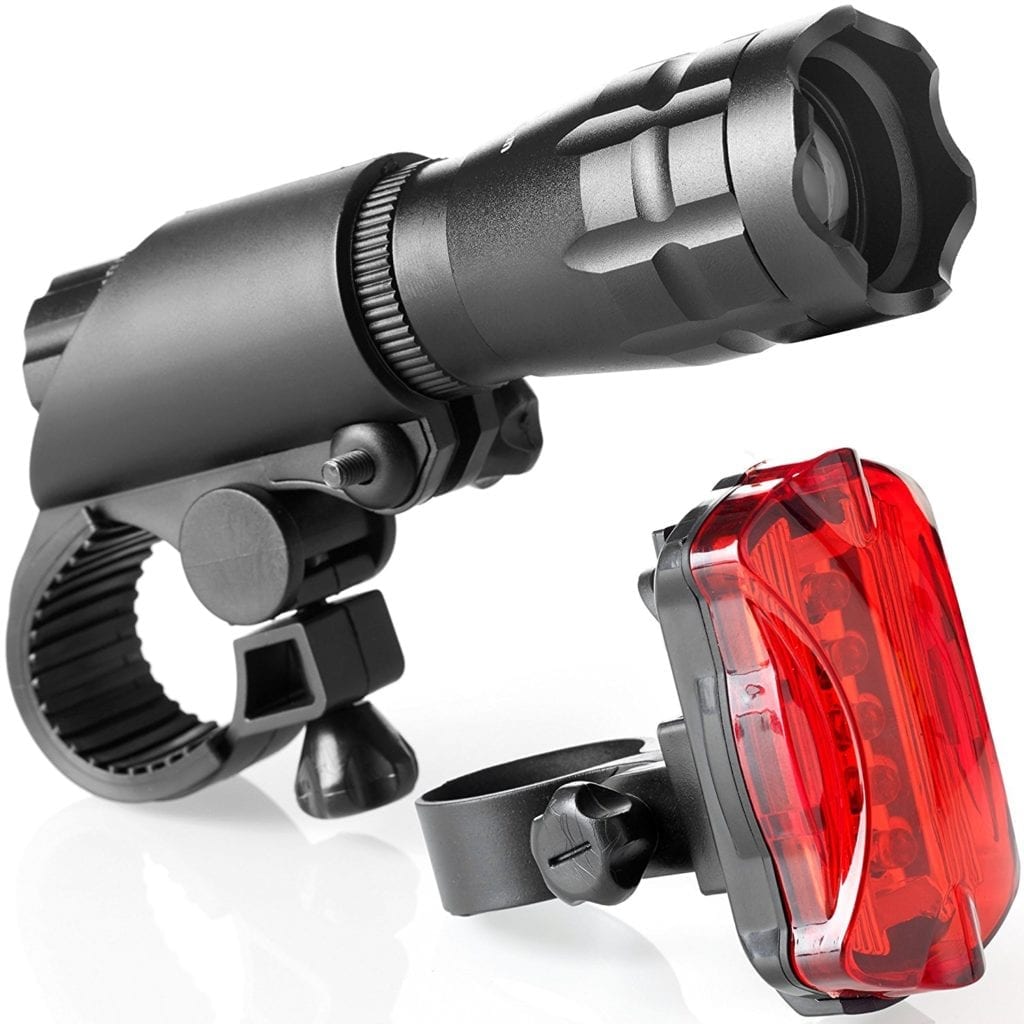
The Team Obsidian bike light comes as a kit. Along with the headlight, you’ll also get a rear blinker light. Both lights run on AAA batteries (3 in the front and 2 in the back). The headlight shell is aluminum, but keep in mind that this unit isn’t rated high in terms of IPX. Some have suggested it’s an IPX2 or 3 as opposed to our other top choices that are IPX5. Having said that, these do relatively well in wet conditions. While the mounting kit for both lights is meager, they do well once secured to the bike. The Obsidian really shines if you’re looking for a bicycle light that can also function as a flashlight—and is under $17. In some respects, it’s also nice to use AAA batteries since you’ll have a dependable light intensity for a longer period of time compared with USB-charged lights.
7. Portland Design Works Radbot 1000 Tail Light
Purchase at Amazon
Lumens: 1.0 Watt
Key features: 2 AAA batteries, 10-25 hours of use, accelerometer, 3 different mounting options, made in the USA
The Portland Design Works Radbot 1000 is really the gold standard for bicycle tail lights or rear blinkers. It’s weatherproof and has a super low-power mode (20 lumen), solid mode or a high-intensity 80-lumen flash mode. Plus, if it’s from Portland, it has to be cool. This light also has an accelerometer that detects when you brake or corner so that it can brighten to a 100-lumen solid-red beam, which helps alert rear traffic. After charging, you should get about 10-25 hours of use depending on which mode you use.
8. Cycle Torch USB Rechargeable Bike Tail Light
Price: $14.95 – Purchase at Amazon
Lumens: 250
Key features: 5 modes, 2-3 hours of USB charge, low cost, mounting for bicycle or helmet
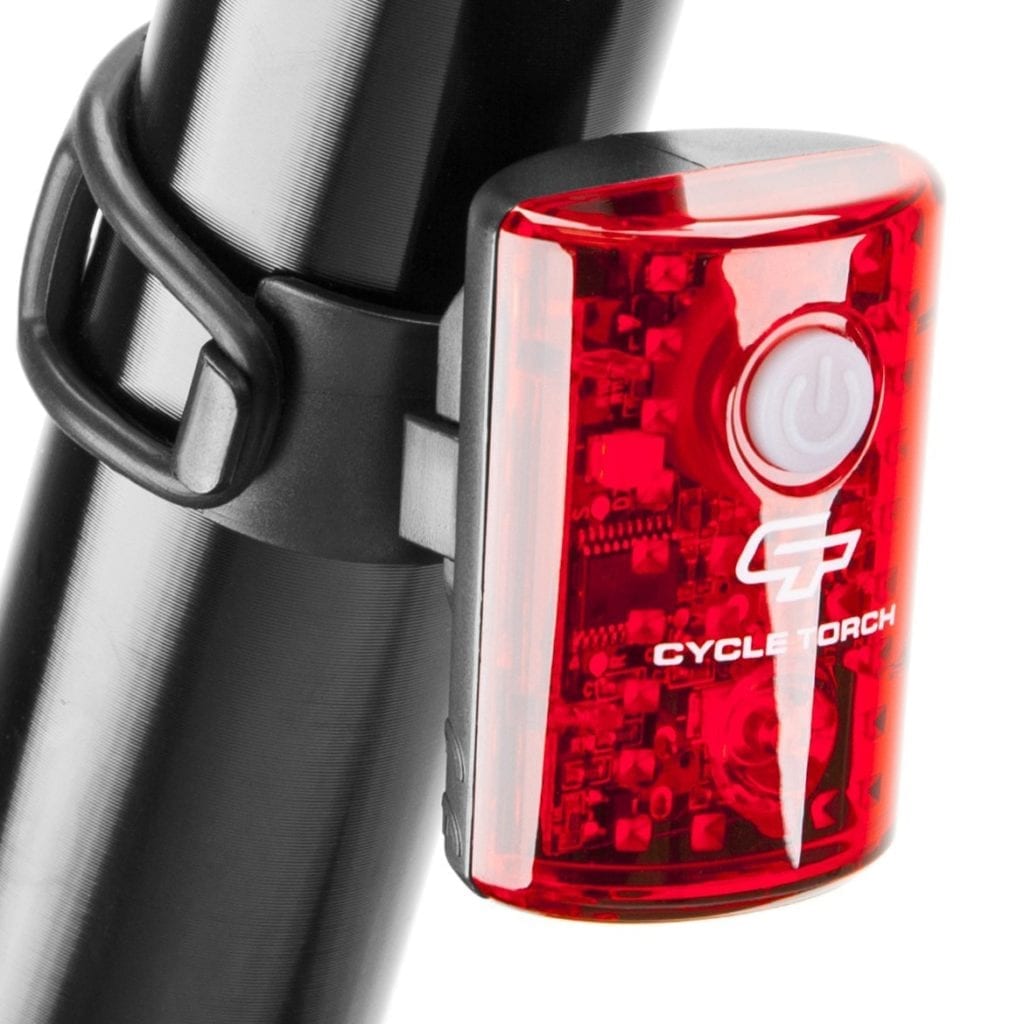
This is a solid low-cost option. Based on reviews, the charge appears to hold well for the first few months, but after that, expect your charge to last about 2 hours. These are not bright enough for daytime usage, so keep this option in mind for a nighttime light; especially if you’re looking for a versatile, low-cost option that can be removed from your bike with little effort.
9. Lezyne Zecto Drive Rear 80
Purchase at Amazon
Lumens: 80
Key Features: 2-in-1 Clip-On System straps, 8 modes, rubber mount for seat posts
If you want the brightest taillight on the market, look no further: The Lezyn Zecto Drive Rear 80 features eight modes, including a super-bright 250-lumen daytime-flash setting with an impressive nine-hour run time. The compact housing and tools-free attachment keeps it secure and out of the way on your seat post. While some people complain that the rubber mounting doesn’t fit their frame, most reviewers were satisfied with the mounting for this light.
10. Blackburn Local 75 Front Light and Rear 15 Light
Purchase at Amazon
Lumens: 75
Key features: 3 beam modes, 25-40 hours of use with AA batteries,
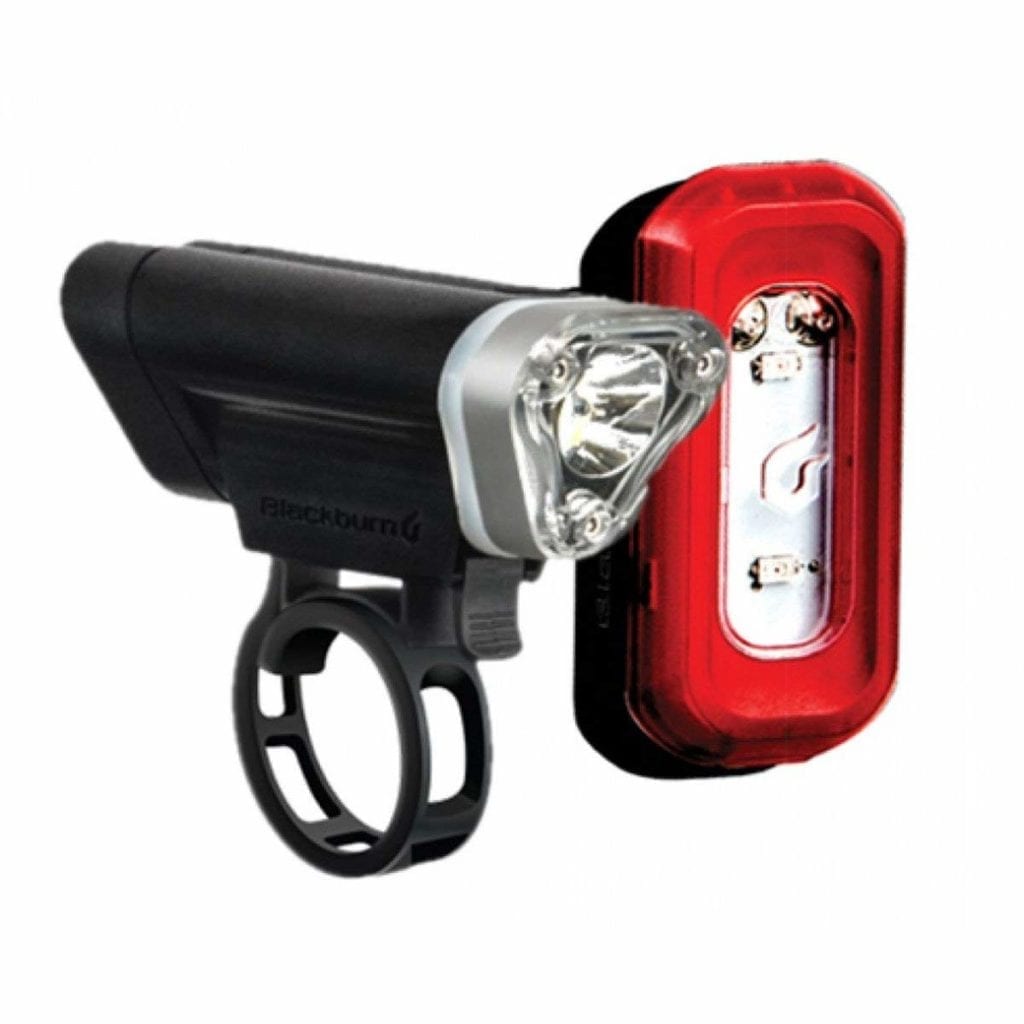
This is another versatile kit from a reputable manufacturer. The front Local 75 headlight has 2 LED lamps and puts out up to 75 lumens of light; hence its name. The Local 15 rear has one solid and two flash settings and puts out up to 15 lumens. Both lights run on AA batteries.
11. CATEYE 800 – Rechargeable Headlight
Purchase at Amazon
Lumens: 800
Key features: strong light, industrial casing, excellent mounting system and durable
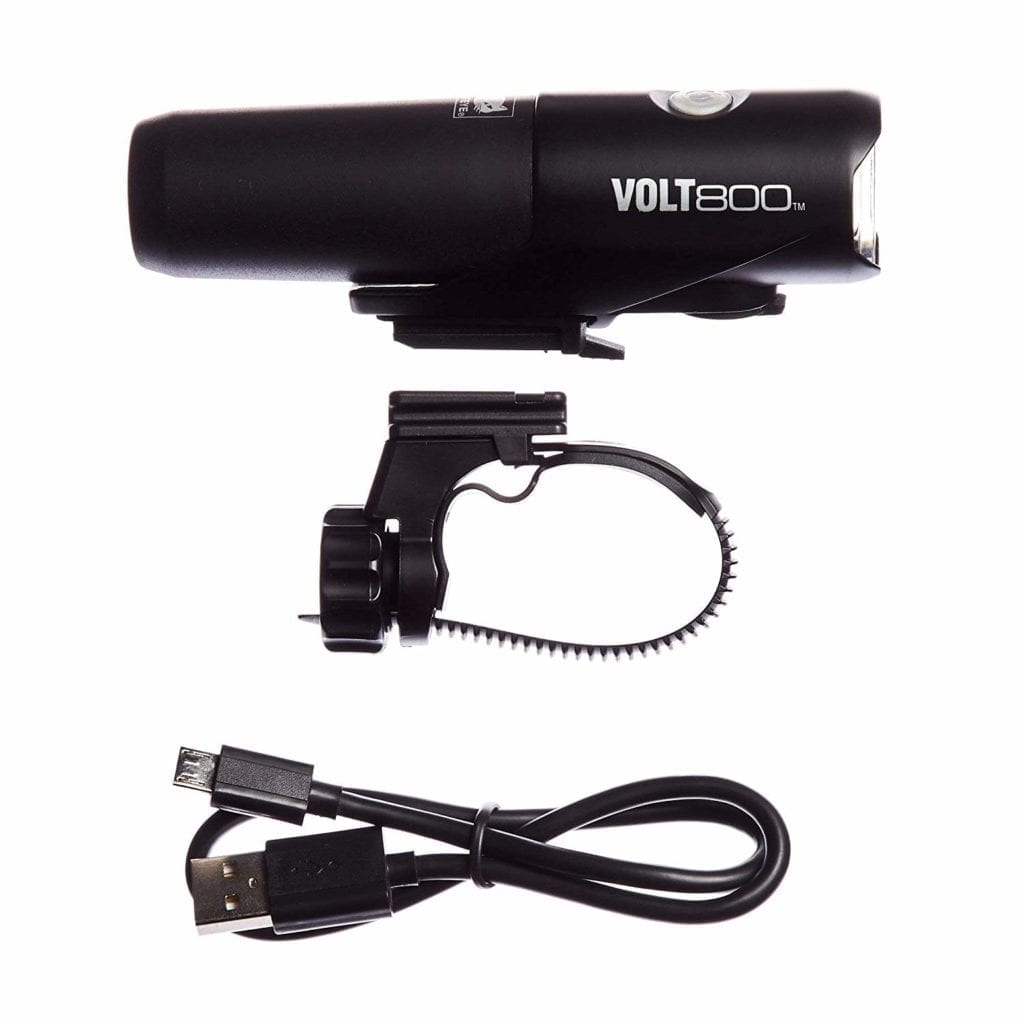
The full-featured Volt 800 is more expensives, but it should last a while and will provide excellent brightness. I used a Cat Eye for many years and found it to be versatile with more than enough power. The beam pattern is broad while providing sufficient light past 300 to 400 feet.
Runner Up – ITUO LED Bicycle Headlight
Purchase at Amazon
Lumens: 2300
Key features: Extreme beam distance, solid frame, IPX6 water resistance
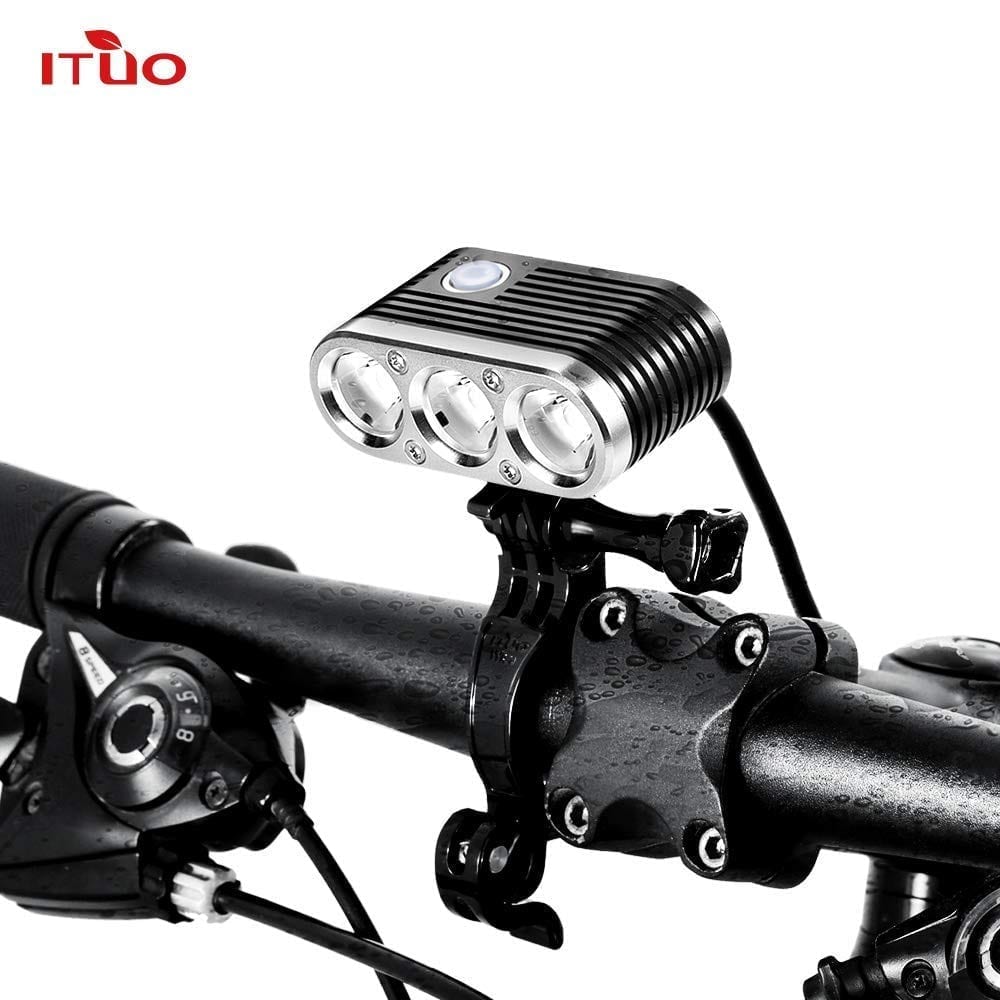
This is the powerhouse option if you’re looking for a “flood light” that will give you enough light to not see the road in front of you, but to also warn the nearby air traffic controller you’re ready to land. Joking aside, this light is certified IPX6 and relies on 3 high power Cree XM-L2 U3 neutral white LEDs. This light also comes with adapters for handlebars or for your helmet.
The Dangers of Biking Without Lights
When I completed my evening bicycle commutes in Oregon, I lost track of the number of times cars simply didn’t see me. It’s sobering to say the least. Over time, this led me to add more lights to me “bicycle light kit” to improve my visibility. Unfortunately, a professor whose night time commute resembled mine in Oregon bicycled to work for almost 50 years was ultimately hit by a car at an intersection I crossed during my own commute. In summing up the cause for the high occurrence of bicycle accidents, such as this one, the police mention rider and driver education, but also the need for improved bicycle lights.
Be Extra Cautious
If you’re biking at night with rain or in wet conditions, we can’t say enough about covering your bike and body with lights, reflectors, rope lights and whatever else will increase the visibility of you and your bike. Think about your plan of attack as a “system” plan that includes illuminating every major part of your bicycle. Don’t forget that rain and wet roads will greatly diminish a driver’s visibility. If you live in an area with a high number of older or younger drivers, keep in mind that this increases the risk of cycling in general, but especially cycling at night when older drivers will have a hard time seeing you and younger drivers are simply not paying attention or are driving carelessly. While a recent study found that older drivers cause accidents 16% more frequently than average age drivers, younger drivers were found to cause accidents 188% more frequently. However, the same study didn’t account for wet, nighttime conditions. Here’s some helpful statisti
- Regardless of the season, bicyclist deaths occur most often between 6 p.m. and 9 p.m., regardless of the season (20% weekdays and 26% weekends).
- Bicyclist deaths occur most often in urban areas (71%) compared to rural areas (29%).
- Bicyclist deaths were 5.6 times higher for males than females in 2016.
Bike Light Kit
Although it will cost you a few more dollars, we are strong proponents of a systems approach to enhancing your nighttime visibility while bicycling. In other words, think about how best to illuminate not just your bike, but also your body, backpacks, panniers and anything else that would otherwise be invisible without a light. Our suggested kit includes 2 front lights, 2 rear lights, ankle reflectors and a reflective vest. First, we strongly recommend that you wrap your bike frame or rims with reflective tape or neon lights. If you still need convincing of the need for a “bicycle light kit” check out the results from a recent study about driver attitudes to cyclists. Note the reference to cyclists being 12 times more likely to be killed by in a traffic crash with a car. And the question we asked early on about how you’re most likely to die? The following modes of transportation are the most dangerous (from most dangerous to least): pedestrian, motorcycle, bicycle and airplane.
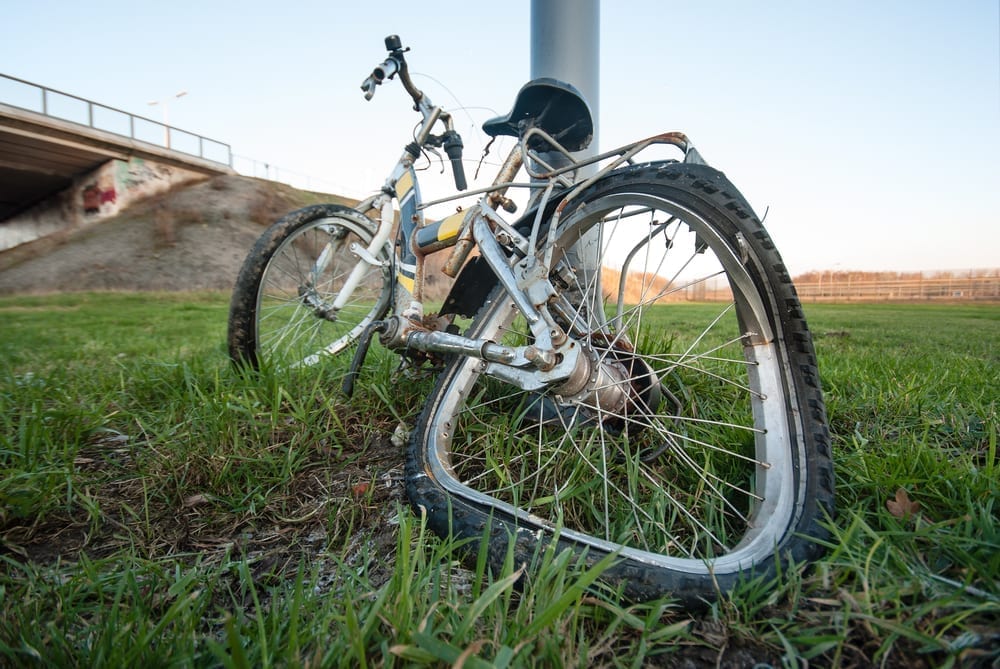
Most relevant in the collection of statistics are data pointing to the following fact: 39% of all bicycle deaths occur between 6pm and midnight, with most of these occurring between 6-9pm. Below is one way you can improve your own visibility–add more bike lights in strategic locations by purchasing a set of lights and reflectors.
Our Recommended Bike Light Kit
- Bicycle helmet light
Maketheone Bicycle Light or the Topside Bike Helmet Light - Bicycle headlight
Gator 390 headlight - 2 Rear Lights
Radbot 1000 on flash mode and
a steady red rear light - Miscellaneous
Ankle reflectors
LED reflective vest
LED bicycle wheel lights
Helpful Tips
If you’re a commuter traveling a short distance in a well-lit area, our bicycle kit might be a good fit–less a few items such as the rim lights. If you ride regularly after dark and live in an urban area, we strongly advise that you invest in the best lights and reflective equipment you can afford. One rule to keep in mind is that even when bicycling during the day, you should use a light; especially a tail light. And, the brighter the ambient light, the brighter the light you’ll need for visibility. In other words, a light that puts out 30 lumens of light won’t seem nearly as bright during the day as it would at night
How to Power Your Lights
Lithium batteries are common in bike lights today. But they are often more expensive and it’s hard to compare them to double or triple A batteries if the frequency of charging is an issue for you. What is sure is that conventional batteries last longer and often provide a strong lumen count.
Where You’ll Mount Your Lights
We’ve mounted lights to almost every part of our bicycles. While most headlights mount to the handlebar, some models can also be helmet-mounted.
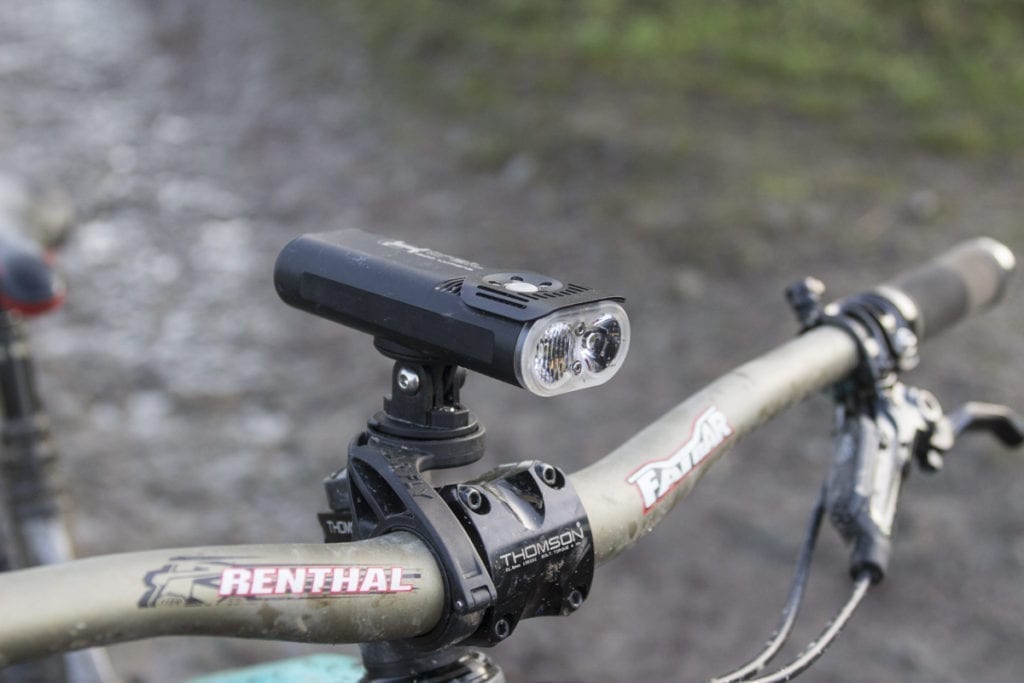
In the past, I’ve always used a 500+ lumens headlight for my helmet. As long as the headlight has a mounting system that can be used with a helmet, you’ll be able to extend the range of your vision and ensure your body is more visible to drivers from a lateral perspective since a headlight secured to a helmet will rotate or pivot as your neck pivots. It’s a no-nonsense way to boost your vision and your visibility.
Bicycle Light Definitions
Headlights
Bike headlights help you see what’s in front of you. And, when you’re on the road, they help others see you; especially when you’re driving the opposite direction. A good headlight is more intense than your tail light and emits light using a narrower beam pattern. Because of this, headlights burn through batteries (or charge) pretty quickly compared to a tail light. Headlights are usually mounted to handlebars, but in many cases cyclists mount their primary or secondary headlight to their helmet as well. Higher quality headlights offer multiple settings to allow for dimming, flashing or different beam patterns.
General safety lights
Safety lights are mounted just about anywhere you can fit it on your bicycle. In most cases, they are mounted on the back of a bike or to spokes or frames. We highly recommend neon rope lights as part of your bike light kit. Remember, the goal is that you can never be too bright or obnoxious when you’re bicycling in dark, wet conditions.
Tail lights
Your taillight is an essential part of your bike light kit. Even though some states don’t require them, you should never bike at night without at least one headlight and one tail light. Most are red and have two or more settings such as blink, fast blink, steady state, etc.
Frame lights
While frame lights aren’t essential, they are highly recommended since they help motorists see your bicycle from the side. As mentioned above, we highly recommend neon rope lights that can be wrapped around your bike frame.
Spoke lights
Spoke lights are becoming more popular every year. We’re huge believers in spoke lights since we used them for several years and in several cases, it felt like the side-to-side visibility they provided helped drivers.
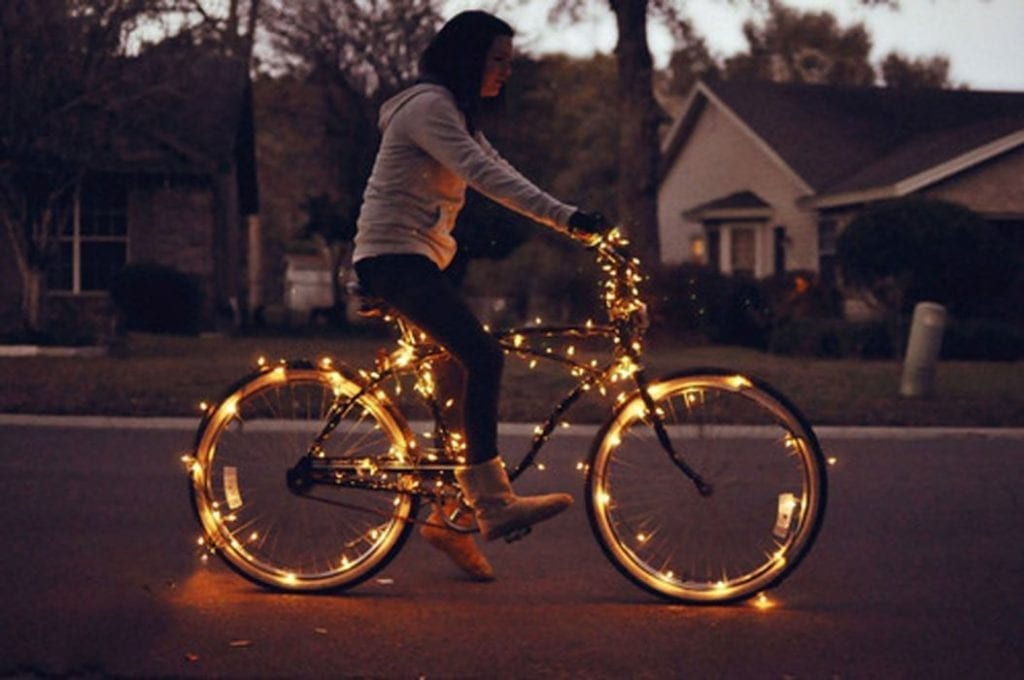
Helmet lights
Bike helmet lights can be clipped, strapped or screwed to a helmet. If you’re lucky (or you plan ahead) your headlight or blinker will come with a strap that fits right over your helmet holes and allows you to cinch the strap to the top of the helmet. We absolutely love helmet lights as a supplement to your headlight since a helmet light follows your neck wherever you turn and provides additional visibility. This also provides additional visibility for motorists who are more likely to see you when you have a headlight and a helmet light.
Lumens and beam patterns
It’s hard to discuss bike lights without defining lumens and beam patterns, as these two concepts are very important when choosing the best bike light for your needs.
Lumens
A lumen is basically a unit of measurement for the amount of light that strikes the object you want illuminated. The higher the number of lumens, the brighter the light. This is especially important when choosing a bike headlight – or if you often travel off-road paths.
You can use the following statements about lumens as a general guideline.
- Safety lights are typically in the 25- to 100-lumen range. That’s just enough to make your bike visible to motorists, but it’s not enough to light your way, so only consider a light in this range if it’s going on your bike’s rear, frame, or spokes for safety purposes.
- If you typically ride on well-lit paths or roads and just need a little extra light, you’ll probably find a headlight in the 100- to 300-lumen range to be sufficient. Going much beyond that while riding in mixed traffic could blind oncoming motorists, greatly increasing your chance of an accident.
- Mountain bikers, off-road enthusiasts, and those who ride at night or on poorly lit roads needs much more intense headlights. Generally, you’ll want at least 400 lumens, although many headlights specifically marketed for mountain bikers are much brighter than that. (Some go well beyond 1,000 lumens.) For the sake of comparison, consider that the typical car headlights emit roughly 700 lumens on low beam and 1,200 lumens on high.
Beam pattern
Beam pattern refers to how widely a bulb casts its light. A spotlight, for example, focuses in a narrow but long beam pattern, while a flood light spreads illumination over a wider, yet shorter, path. Your best choice of beam pattern depends, to a great extent, on where and how you ride. For some cyclists, owning two light sets with different beam patterns can be beneficial.
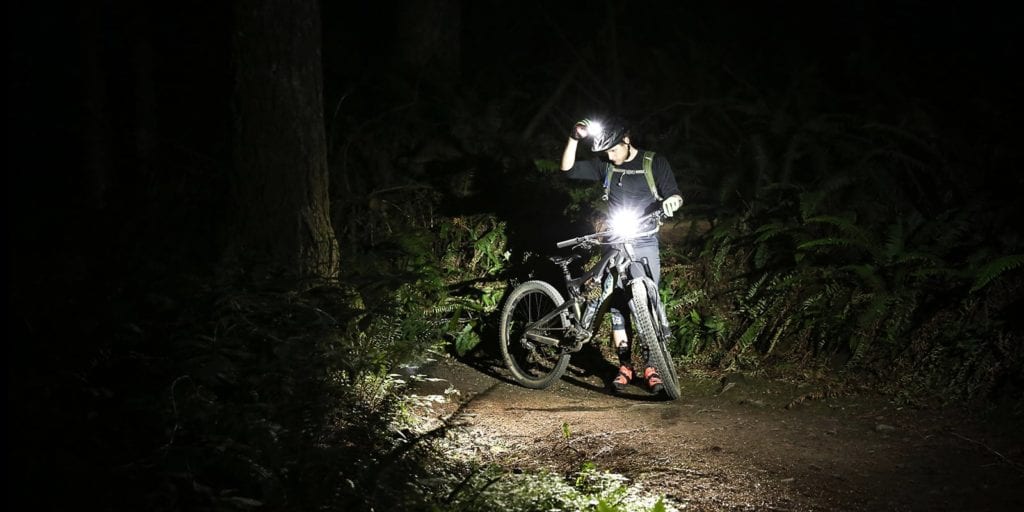 The average commuter cyclist who rides on surface streets or fairly smooth paths does best with a headlight that has a fairly tight beam pattern. This means there is less peripheral illumination, but the light shines further ahead. Mountain bikers and others who ride in rugged conditions fare better with a light that has a wider beam pattern, making it easier to spot potholes and other trail hazards.
The average commuter cyclist who rides on surface streets or fairly smooth paths does best with a headlight that has a fairly tight beam pattern. This means there is less peripheral illumination, but the light shines further ahead. Mountain bikers and others who ride in rugged conditions fare better with a light that has a wider beam pattern, making it easier to spot potholes and other trail hazards.
Why Lumens Matter
Unfortunately, a light’s lumen score also doesn’t tell you whether different parts of the beam appear brighter than others, or how severely the light’s beam is pointing downward. A good bicycle headlight directs the full power of your beam toward the ground and concentrates the beam’s strength toward the top of the light (which hits the ground farthest from you). The problem occurs if the road nearest to you gets more light, then objects in the distance will be less visible based on the contrast created by the brighter area directly in front of you. In short, lumens matter, but only so far as they point to the right place using the a relatively tight beam pattern.
Bicycle Light Research
Even though it might seem like adding all of these lights and reflective accessories to your bike will make you impervious to night time accidents, the reality is that there have been very few studies to date that assess bicycle light technology. For example, even though the top ranked light embraces daytime running lights (DRLs), there have been few studies beyond those conducted for the Bontrager Ion Pro. In many cases, claims made by companies that embrace this technology draw on studies conducted by researchers in the automotive industry. In face, multiple studies (PDF) support the claim that crash rates are significantly lower when DRLs are in use. Since these studies focus primarily on cars and their drivers, no one knows whether the results apply to cyclists who are using DRSLs.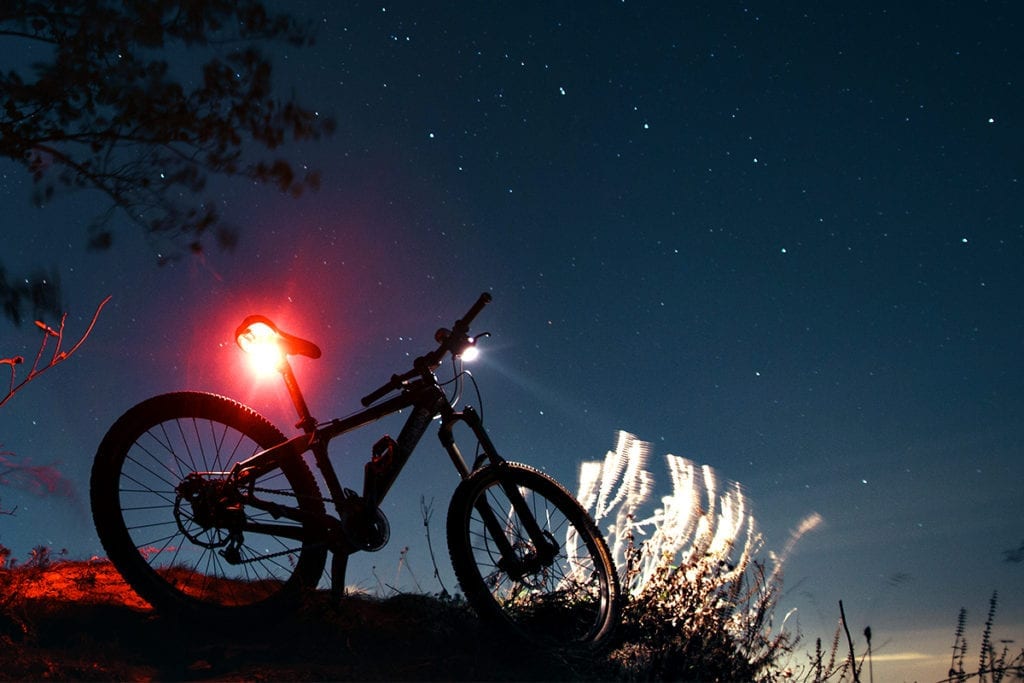
Unfortunately, researchers also haven’t spent much time documenting how effective taillights are. In Darlene Edeward’s research on flashing taillights, she found that taillights made cyclists more visible during the day and at night, but any claims about specific flash patterns being better couldn’t be supported. This same researcher contended that both regular-interval patterns and those that flash erratically had the same rate of success.
Blink Pattern
Another interesting fact…while the Society of Automotive Engineers recommends that emergency lights blink between 60 and 240 flashes per minute for optimal visibility, it’s difficult to determine whether that frequency helps drivers judge the distance between himself/herself and the cyclist. At the very least, the Washington State Department of Transportation suggests that whatever one uses, the a bike’s front headlight should never blink since that would limit visibility during the flash intervals.
Feel free to check out our best water bottles for cyclists post if you’re looking for some additional gear. You might also want to review our recommendations for bicycle pants so you’re fully prepared on dark, rainy days for commuting. And if you’re looking to put your gear to the test, the Eastcoast Greenway is an excellent trail to check out for a weekend tour. You can also read more about bicycling in general at our flipboard.
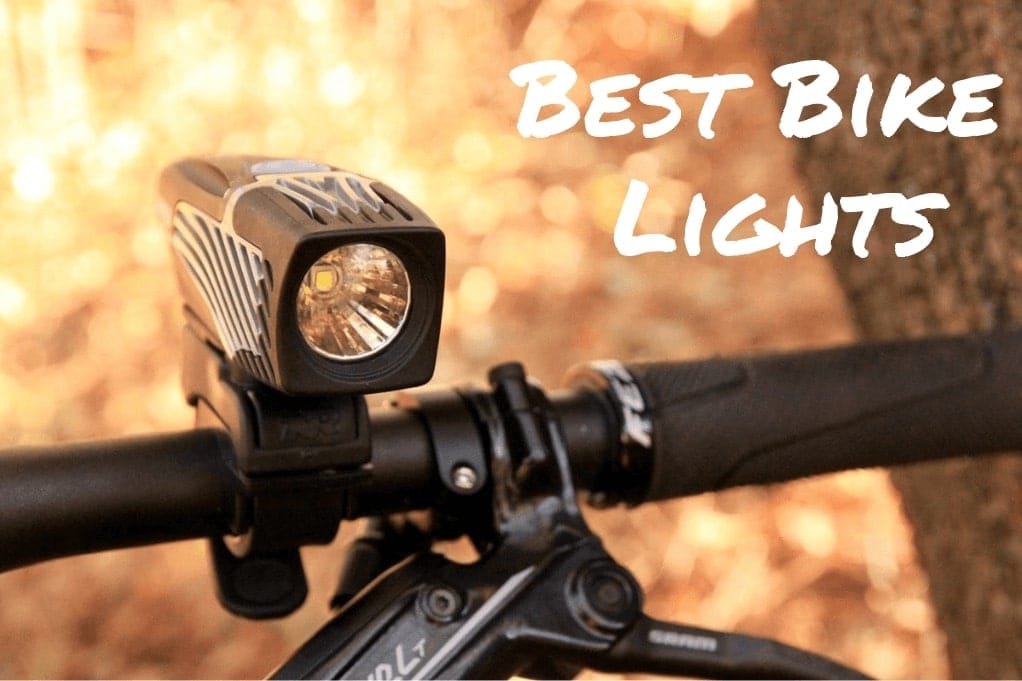
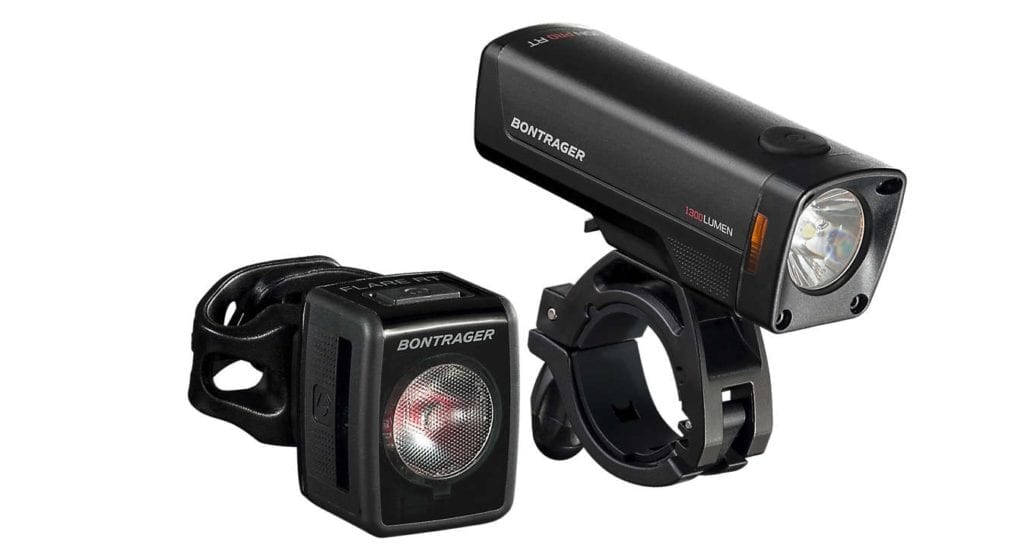
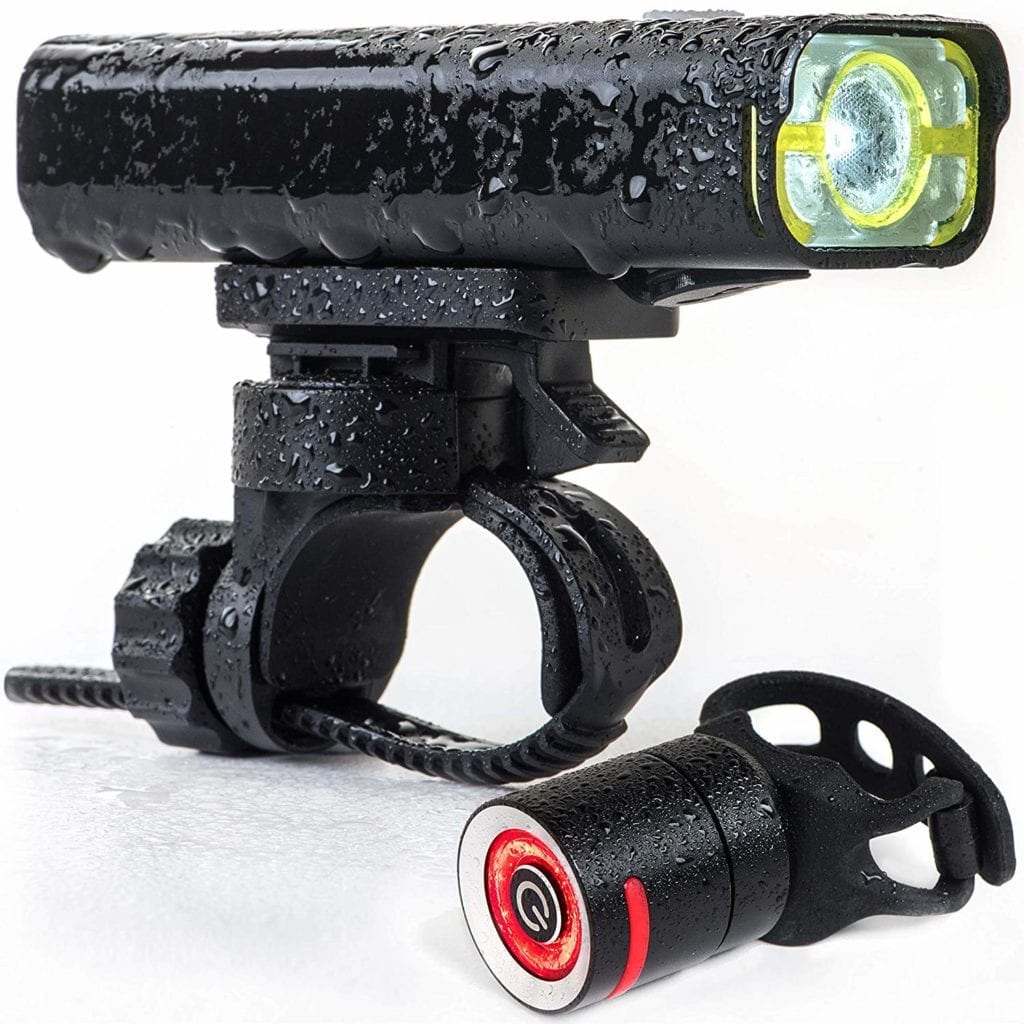
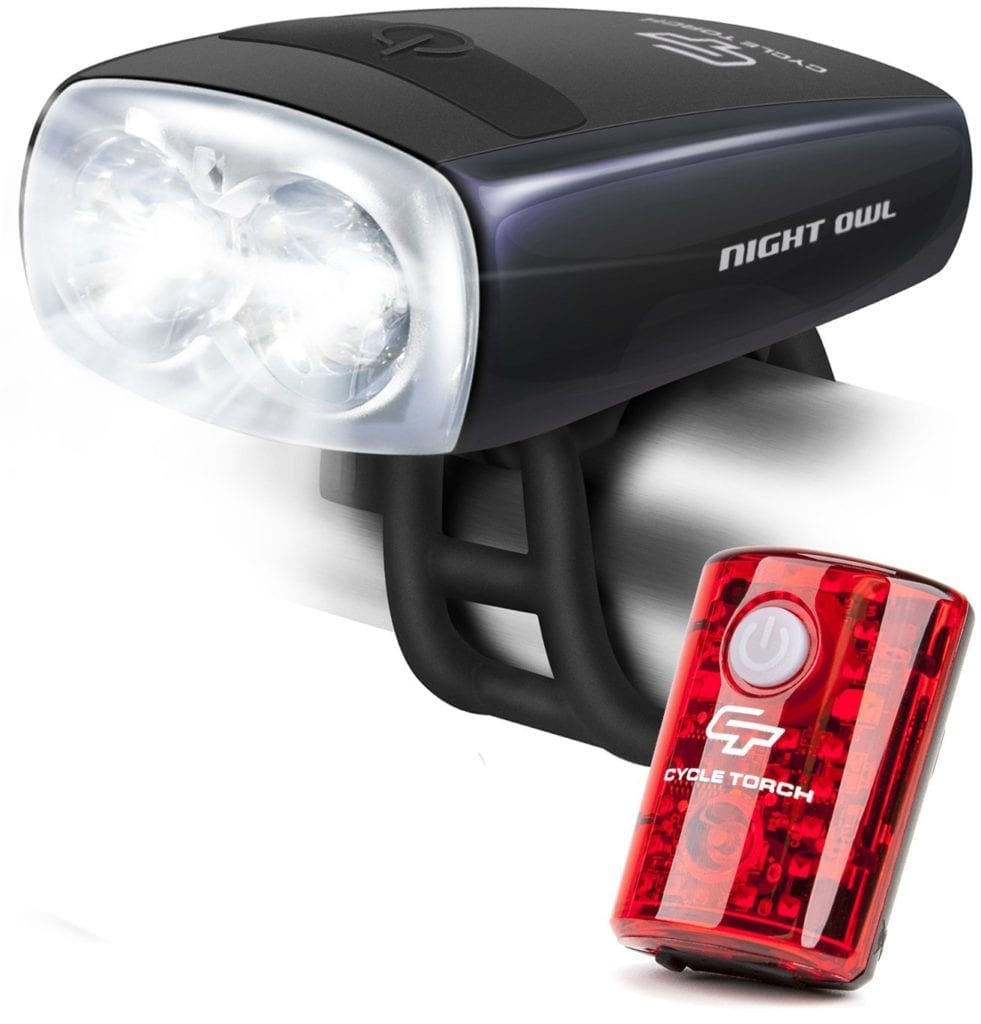
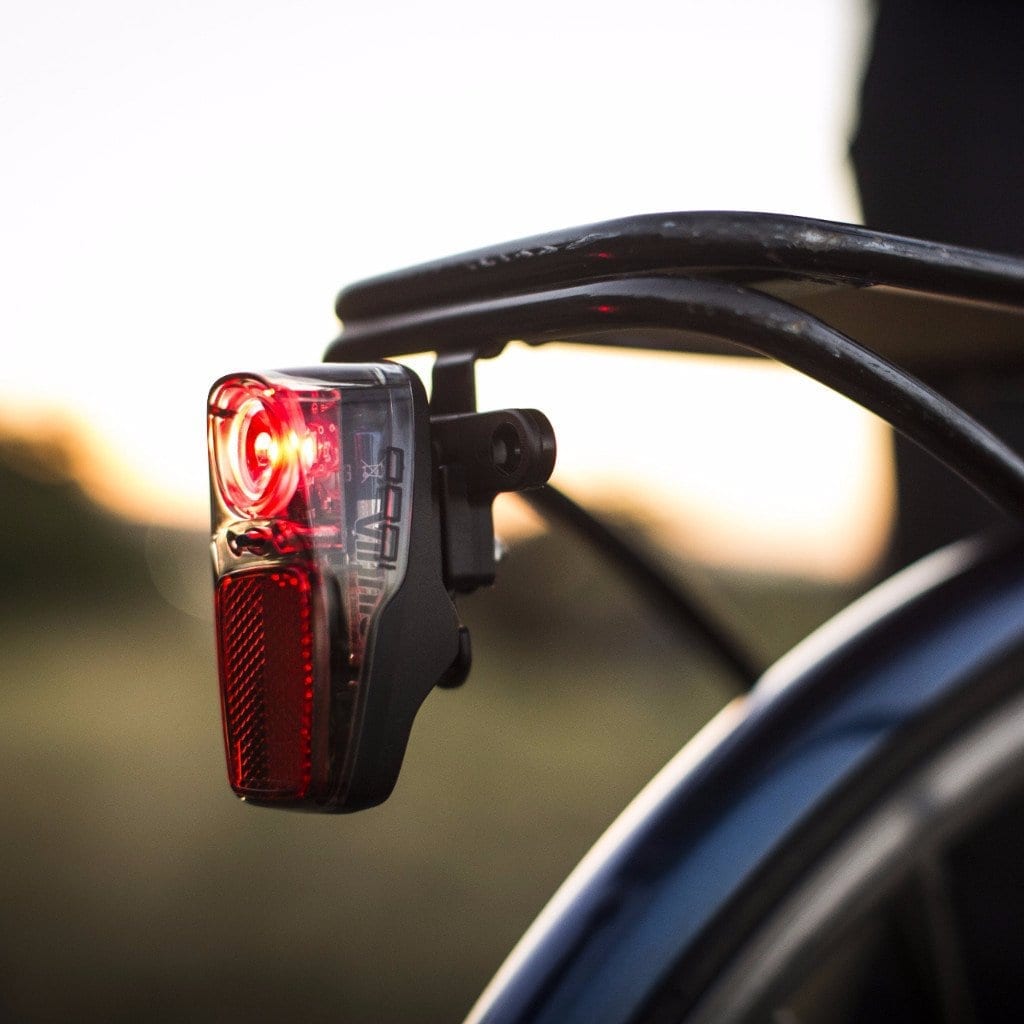
8 comments
[…] night, most drivers will not see you easily even with a conventional front or back bicycle light. Bicycle New England offers numerous bicycle light suggestions if you’re in the market for bicycle lights, but our rule of thumb is that you can never be […]
[…] night, please take the time to outfit your clothing and your bicycle with reflective material and bike lights. Arm and ankle bands go a long way towards making you more visible on the road, but I strongly […]
[…] Many cyclists appear to consider bicycle lights as an non-obligatory further; one thing else to hold round on the bike, including weight to lug round for no good purpose. Whereas it’s true that lights are listed in outlets as bicycle equipment, they have to not be lumped into the identical class as, say, mudguards or saddlebags. They’re important tools that may assist hold you protected. best bike lights […]
[…] As we are able to see, bike lighting makes the bike not only a technique of transportation, but in addition a big a part of the picture in the dead of night. Apart from the aesthetic perform, vivid bikes are simpler to be seen at night time, which implies extra security for bicycles and bicycle house owners. No matter it was, a whole set of motorbike lighting gadgets can’t do with no highly effective rear mild, as a result of this lighting system makes it potential to focus the eye of the visitors on the safe space across the bike. So, how to decide on a rear mild on your bike? best bike lights […]
[…] Best bicycle lights […]
[…] many different ways. And if you do hit the road at night, be safe and equip your bicycle with the best bike lights you can […]
[…] If there is a function at the lodge, please be courteous and ride well away from the activity on the lawn. These trails are multi-use so be careful if you encounter hikers. Please stay on the trails and do not leave any trash. No motorized vehicles are allowed on the trails or ski slopes. Dogs are allowed and Town ordinances require that you pick up your dog’s waste. There is a Mutt Mitt dispenser at the trails kiosk, as well as on trees in the parking lot and near the trail head. Many bikers enjoy a swim at the boat launch in Hosmer Pond after their ride. There is a port-o-pottie at the ball field. If you’re biking in the early morning or near sunset, don’t forget to bring your bicycle lights. […]
[…] Bicycle Light […]